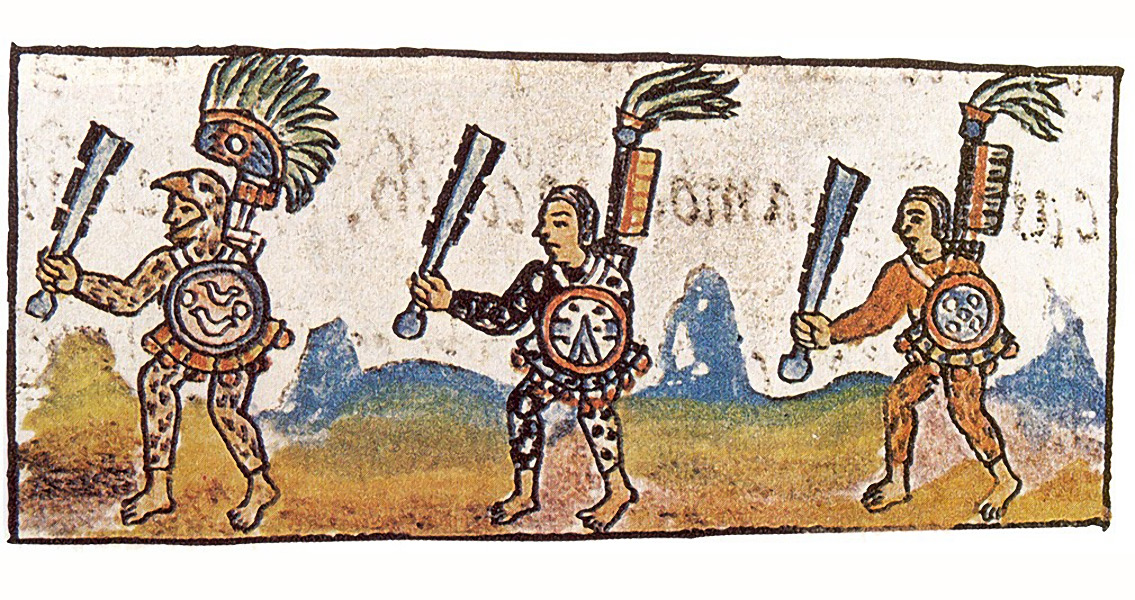<![CDATA[New research has highlighted the complexity of Aztec-era politics. It appears that ancient states in Mesoamerica had diplomatic relationships concerning trade. By focusing on the independent republic of Tlaxcallan, about 75 miles east of modern-day Mexico City, the international team of researchers observed some intriguing finds. Tlaxcallan was founded in the mid-thirteenth century and remained an independent entity, even though it was effectively surrounded by the Aztec Empire by 1500. Interestingly, Tlaxcallan supported Hernan Cortés, playing a pivotal role in the Spanish Conquest of Mexico during the sixteenth century. The international team of researchers from the North Carolina State University, the Centro de Investigación y de Estudios Avanzados del Instituto Politécnico Nacional-Unidad Mérida, El Colegio de Michoacán and Purdue University, conducted an analysis of obsidian artefacts from Tlaxcallan. Obsidian is a volcanic glass that was widely used in Mesoamerica. It was utilised in household tools and weaponry as well as being fashioned in to jewellery and religious artefacts. Tlaxcallan, however, did not have a source of obsidian within its territory; this raised questions about how the state managed to obtain this precious material. By using X-ray fluorescence, it was revealed that Tlaxcallan's obsidian came from an unexpected place: a location called El Paredón. “Almost no one else was using El Paredón at the time, and it fell just outside the boundaries of the Aztec Empire. So, one question it raises is why the Aztecs—who were openly hostile to Tlaxcallan—didn’t intervene,” said archaeologist John Millhauser, lead author of the report on this research, published in the Journal of Archaeological Science. A possible explanation for why the Aztecs did not intervene in Tlaxcallan’s obsidian gathering is that obsidian was a plentiful resource. “Obsidian was widely available and was an everyday good. It probably wasn’t worth the time and expense to try to cut off Tlaxcallan’s supply of obsidian from El Paredón because other sources were available,” Millhauser writes. Millhauser and his team’s research emphasises the complexity of international relationships in Aztec-era Mesoamerica. Conflict was not as widespread or continual as previously thought. “The fact that they got so much obsidian so close to the Aztec Empire makes me question the scope of conflict at the time,” Millhauser says. “Tlaxcallan was able to access a source of household and military goods from a source that required it to go right up to the border of enemy territory.” Another important aspect of this research is that it reveals an economic divide between Tlaxcallan and the Aztecs. The Aztecs obtained most of their obsidian from a source other than El Paredón. Almost 90 percent of Aztec obsidian came from a site to the north known as Pachuca; Tlaxcallan only obtained around 14 percent of their obsidian from Pachuca. “All of this drives home the fact that geopolitics mattered for the economies of ancient states,” Millhauser says. “Political stances and political boundaries influenced everyday behaviour, down to the flow of basic commodities like obsidian. The popular conception of the Aztec Empire as all powerful before the arrival of Cortés is exaggerated. The region was a politically and culturally complicated place.” For more information: www.sciencedirect.com Image courtesy of Wikimedia Commons user: Nemissimo]]>
Aztec Empire Politics More Complex Than Thought
